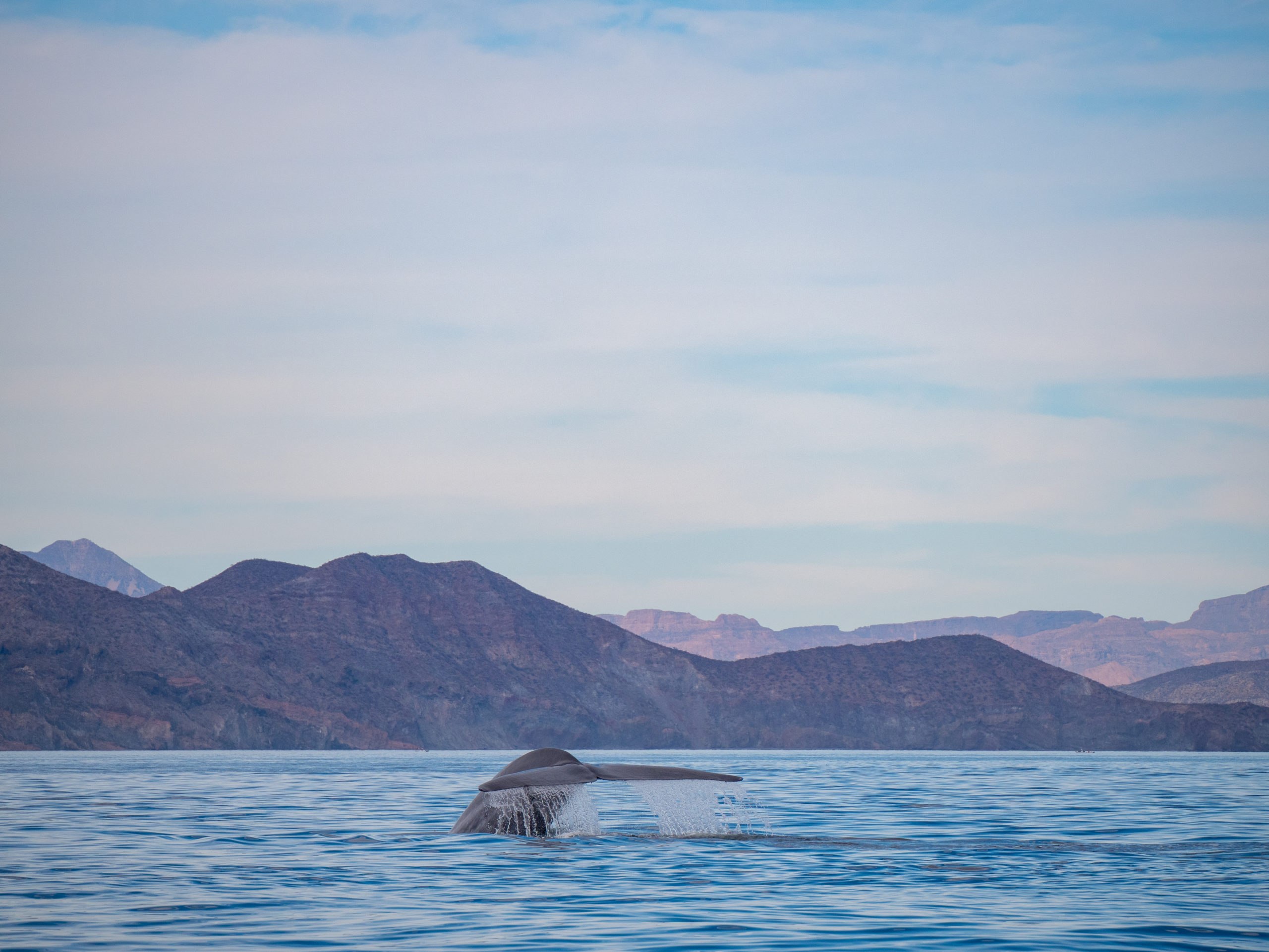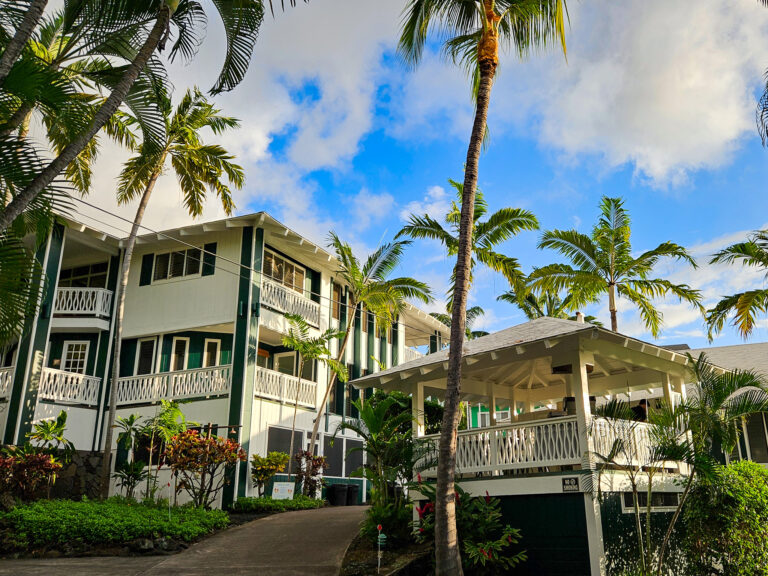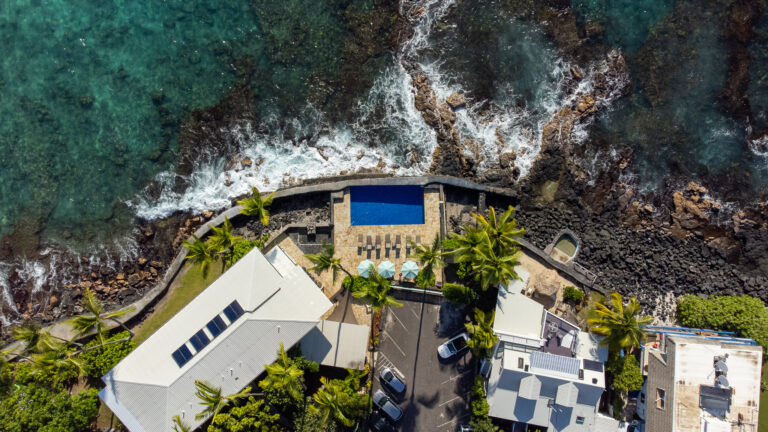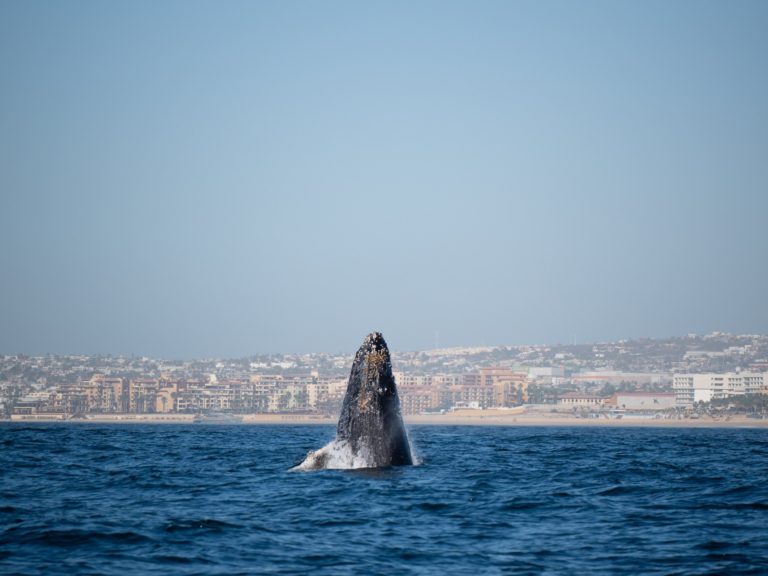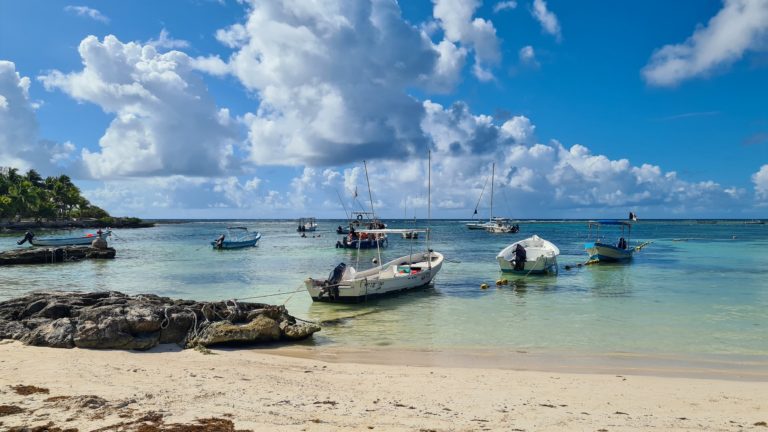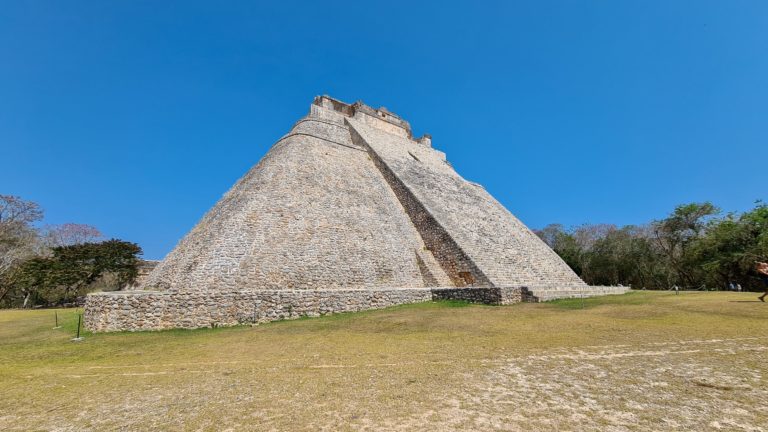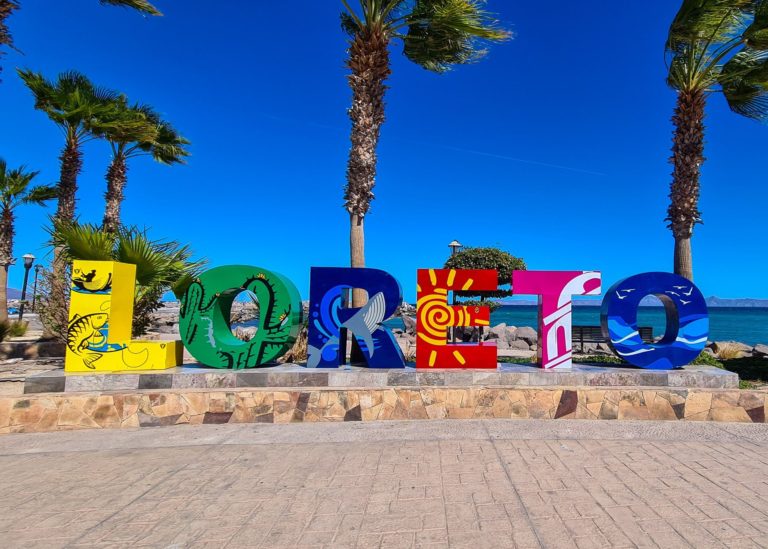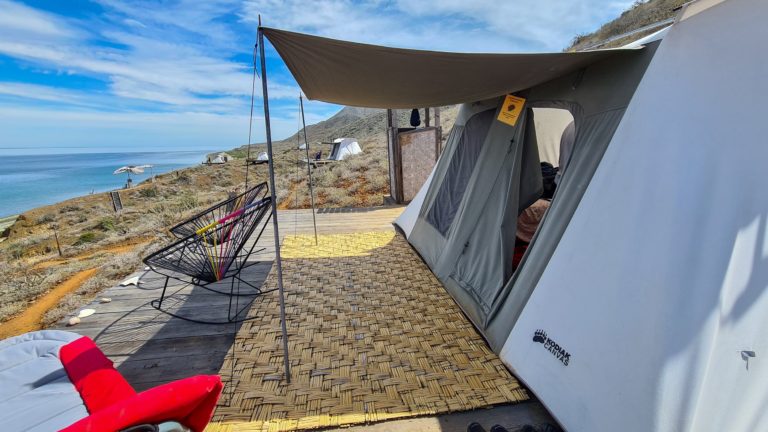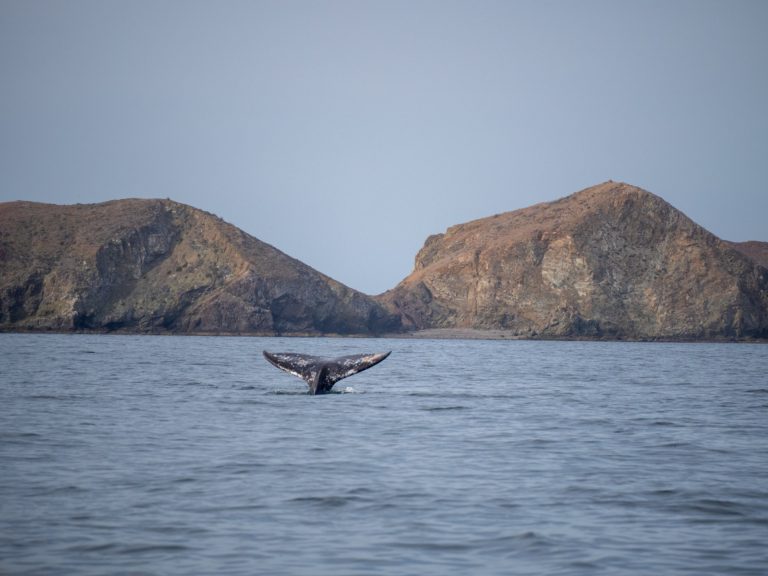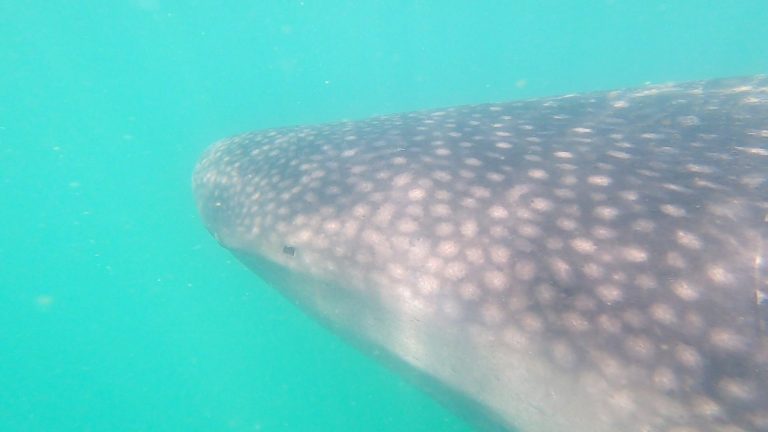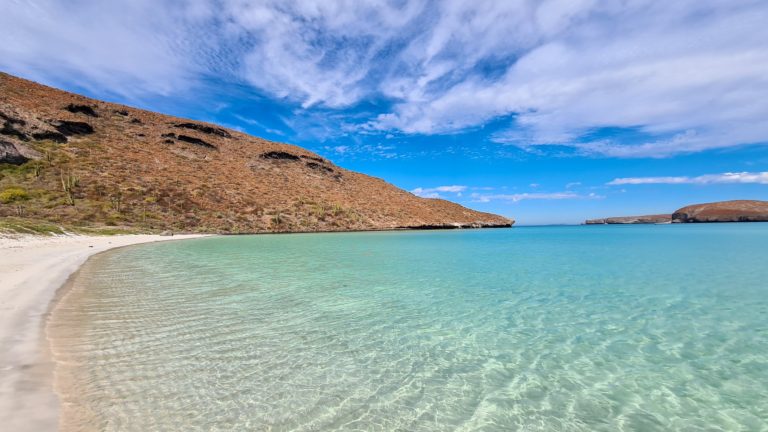Everything you need to know about Blue Whale Watching in Loreto
A complete guide to ethical Blue Whale Watching in Loreto, Baja California Sur – The best place in Mexico to see the largest animal on earth!
(Updated 2024)
This post may contain affiliate links, which means we might earn a small commission on anything purchased through these links at no extra cost to you. Learn more on our Disclaimer page.
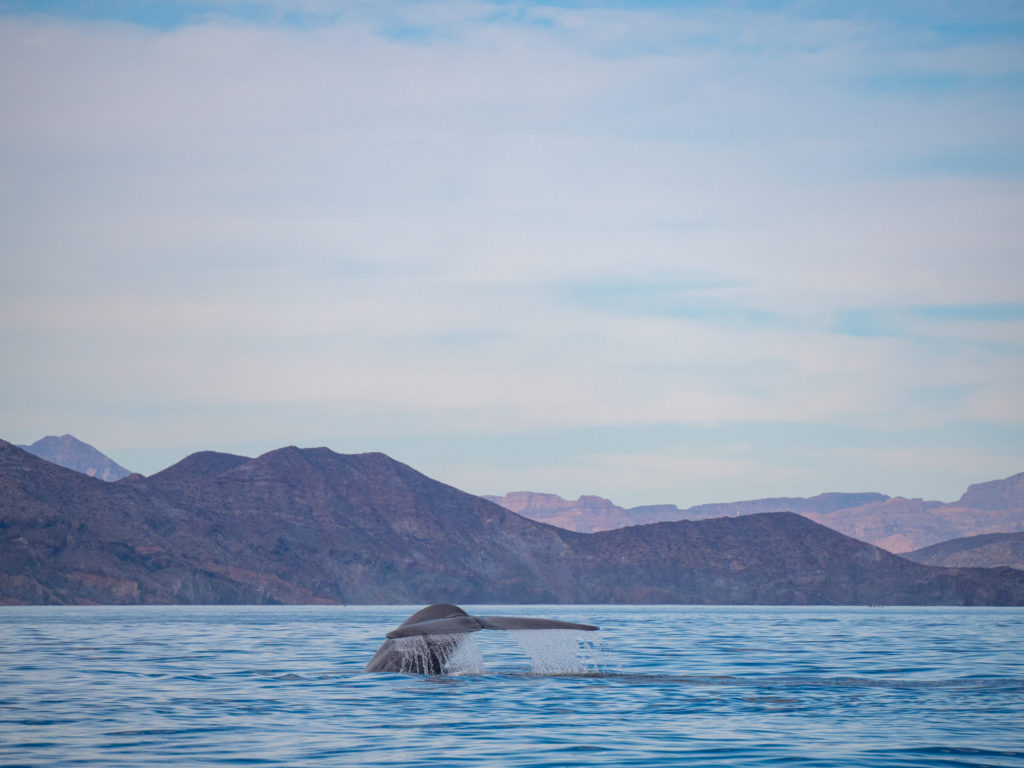
Loreto is a small town on the east coast of Baja California Sur that sits on the Sea of Cortez. The waters around the town, known as Loreto Bay National Park, contain 5 large islands which are home to lots of animals, including several endangered species. The bay offers protected water for the largest animal on earth, blue whales, who migrate here every year to feed, calve and mate. Loreto is definitively the best place to see blue whales in the world so a trip to Baja California Sur should be on your Mexico bucket list. Read on to discover everything you need to know about blue whale watching in Loreto, Mexico.
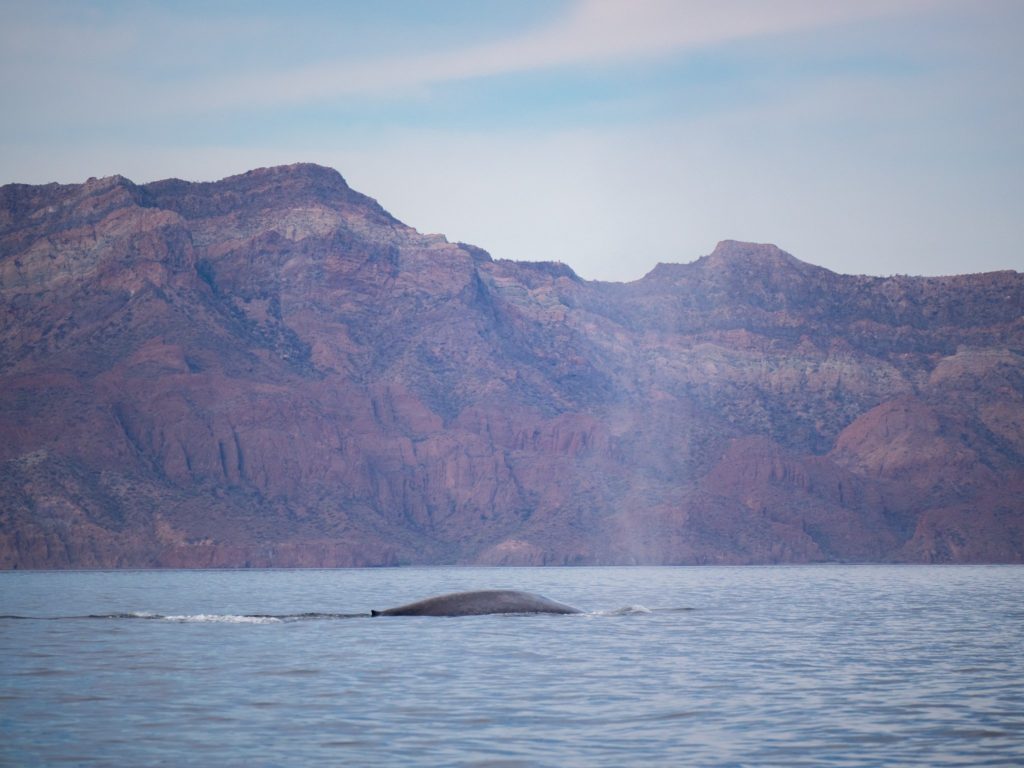
About blue whales
Blue whales (known scientifically as Balaenoptera musculus) are the largest animal in the world. A blue whale’s tongue can weigh as much as an elephant, its heart as much as a car and its total weight can be up to as much as 33 elephants! Blue whales can live up to 90 years old and are among the loudest animals on the planet. It’s thought that, in good conditions, blue whales can hear each other up to 1000 miles away.
Blue whales are part of the baleen family. They spend a lot of time in shallower waters or at the surface, feeding on planktonic creatures like krill. They use plates (teeth) in their mouths to sieve food from water. From the surface, their skin appears grey but in the water it appears a true blue colour. Blue whales are gentle creatures and don’t display acrobatic or interactive behaviours like grey whales and humpback whales, who also migrate down to Baja California Sur each year.
Due to aggressive hunting in the 20th century, blue whales were driven to the brink of extinction. The International Whaling Commission banned all blue whale hunting in 1966. While efforts are being made to conserve the species, they are unfortunately still endangered.
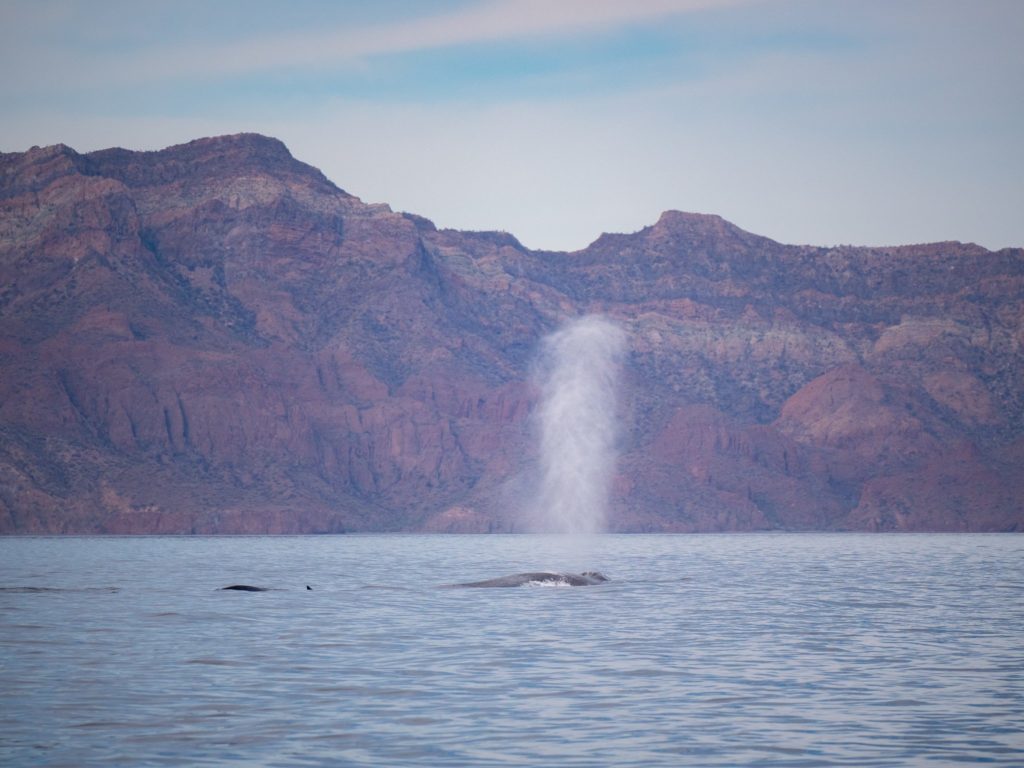
Where to see blue whales
As a popular filming location for international broadcasters like BBC and National Geographic, Mexico is one of the best places in the world to spot the endangered blue whale. Here, on the east coast, the Pacific Ocean separates the Baja California Peninsula from the Mexican mainland by a patch of water called the Gulf of California (also known as The Sea of Cortez or Cortés). It was French Explorer Jacques Cousteau who described this area as “the world’s aquarium” – a testament to the sheer diversity of wildlife found in this patch of ocean. And it’s also here that blue whales transit the Gulf during their annual migration.
It’s thought that there are between 10,000 to 25,000 blue whales left. Of these, around 2800 can be found transiting the coast of California (USA) to the Gulf of California (Mexico) – the largest known population in the world. While it is possible to spot blue whales from other parts of the peninsula, such as La Paz and Los Cabos, the best place in Mexico to see blue whales is without a doubt Loreto.
The waters around Loreto give you the most reliable opportunity for whale sightings. The area of ocean here is known as Parque Nacional Bahía de Loreto (Loreto Bay National Marine Park). The marine park provides blue whales with perfect conditions to mate and calve, with babies learning to swim and feed. Blue whales migrate to Loreto Bay every year to take advantage of the warmer waters, which are protected by the curved coastline and 5 outer-lying islands.
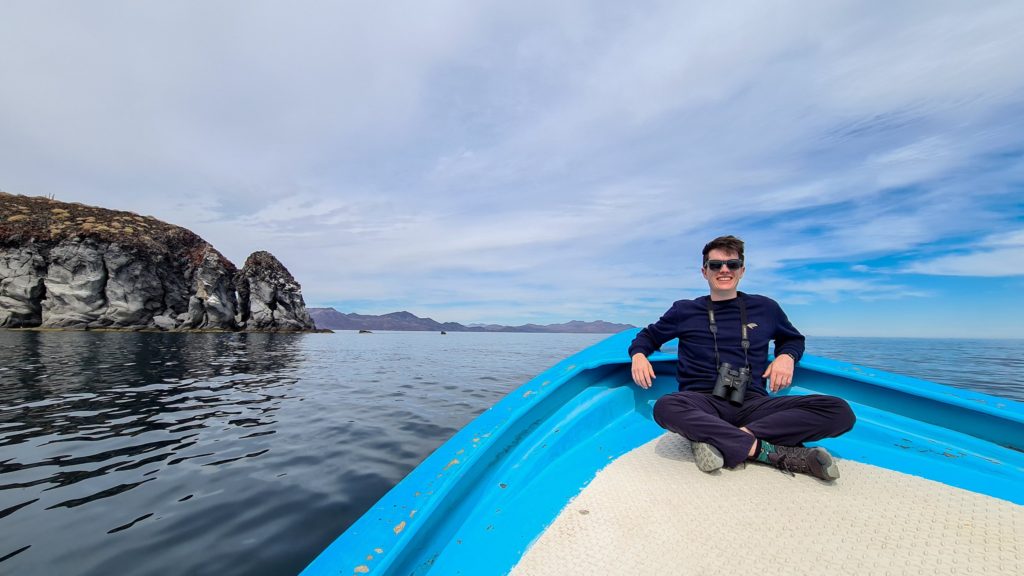
Loreto Bay National Marine Park didn’t always offer blue whales this protection though. In the 1990s, local citizens became concerned about the impact fishing and development was having on the bay. They campaigned and petitioned for over three years to preserve the bay’s natural environment, and in 1996 the waters around Loreto were declared a National Park. Fishing in the park is now highly regulated with lots of restrictions to allow the fish population to return.
The park contains 5 large uninhabited islands: Isla Coronado, Isla del Carmen, Isla Danzante, Isla Monserrat, and Isla Santa Catalina. Due to its protected status as a national park, the waters and islands around Loreto are home to lots of animals, including several endangered species. Some of the animals you might see here include blue, fin and humpback whales, dolphins, turtles, sea lions, frigate birds, blue footed boobies, brown pelicans, angel fish, parrot fish, sierra, dorado, rainbow wrasses and pufferfish. As a testament to its natural beauty, in 2005 the bay was declared a UNESCO World Heritage Site.
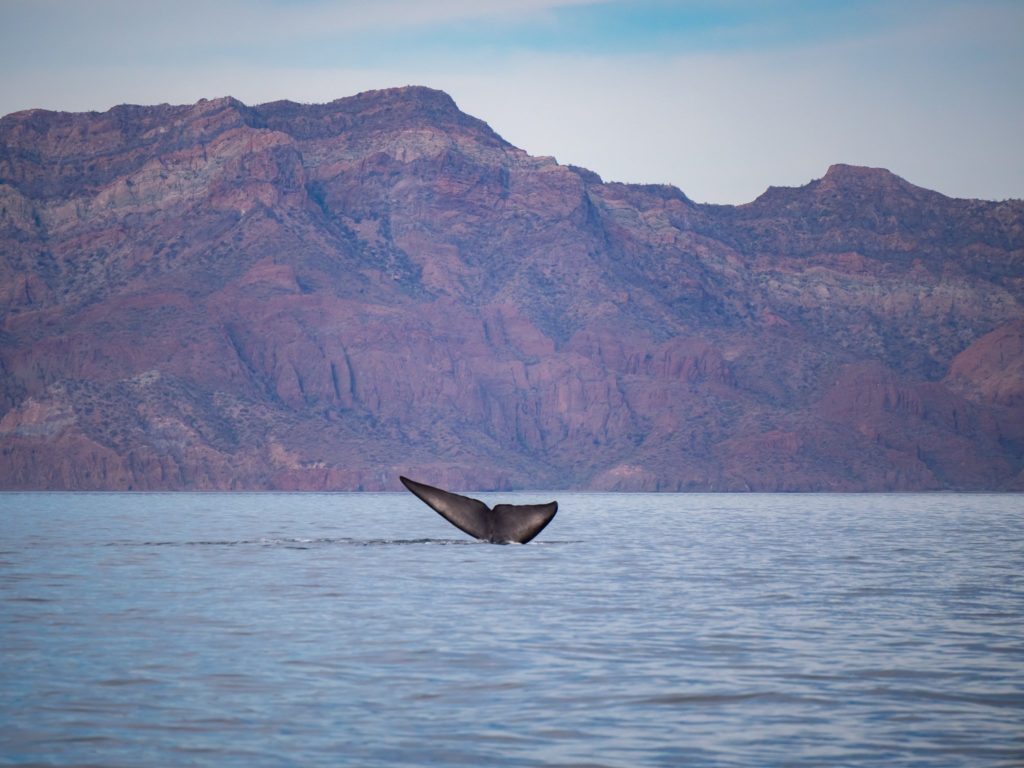
Interactive Loreto Map
When to see blue whales in Baja California Sur
Blue whales migrate to the Gulf of California near Loreto each year. The best time to see whales in Loreto is in winter, which runs between January-March. But the best time for blue whale watching in Loreto, Mexico is between February and March, when numbers are highest so you have more chance of a sighting.
The Eco Alianza Loreto holds a festival each year to celebrate the blue whale. The Blue Whale Festival (Festival de la Ballena Azul) is a three day event, typically held in February or March and features educational workshops, competitions, exhibits, lectures and presentations, as well as amateur and professional live music concerts. You can find all the information on their Facebook page.
You may also be wondering if there’s a best time of day to see blue whales in Loreto? The answer is no – whales sightings are often down to luck. Having said that, we tend to have better luck on morning whale watching trips as there are less boats out on the ocean and conditions can be calmer. But whether you choose morning, afternoon or evening, you’re bound to have an amazing time.
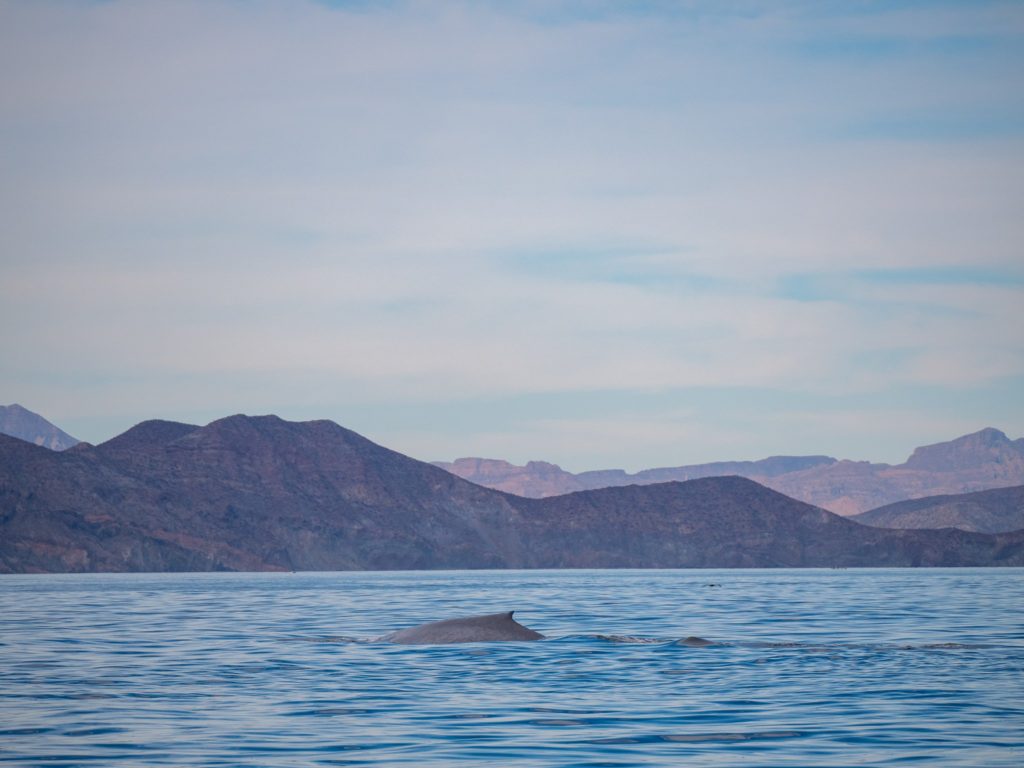
How to see blue whales in Loreto
Due to tight regulations in Loreto Bay, it’s not possible to go whale watching on your own. Mexico has a strict code of conduct for whale watching, to protect whales from a multitude of stressors, such as boats getting too close, chasing them and too many boats crowding around at once.
Read next: Should You Touch a Grey Whale in Baja California Sur, Mexico?
To see blue whales in Mexico, you’ll need to book onto a tour. Whale watching tours in Loreto typically depart from the central Loreto Marina or Marina Puerto Escondido, which is south of the city. There are a few companies to choose from, all who offer blue whale tours in Loreto, but we would highly recommend Loreto Sea and Land Tours. They are a locally owned, fully-licensed company with 12 years of experience offering guided whale tours. All of their guides and captains have the upmost respect for local wildlife and are incredibly knowledgeable. Many of their trips also give you the opportunity to visit the islands of Loreto and see other species of wildlife too. Alternatively, Loreto Blue Whales offers private whale watching trips for a more intimate experience.
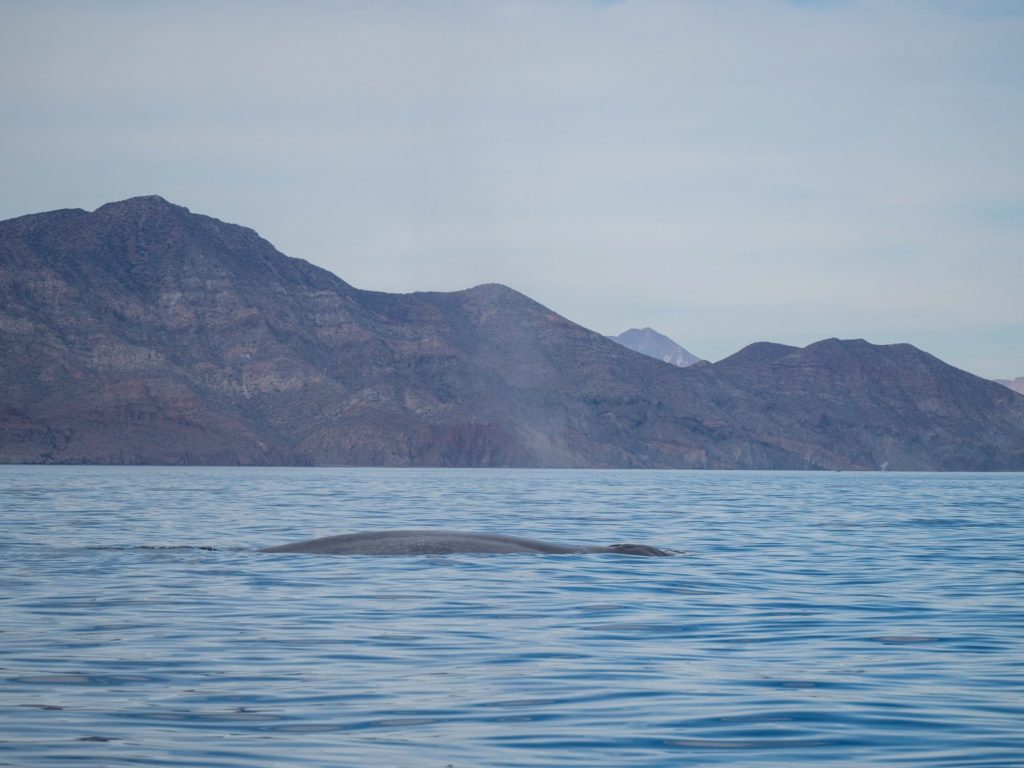
Blue whale behaviours
You might be wondering what you can expect to see on a blue whale tour in Loreto. Each trip is different, but when you see a blue whale, you’ll likely spot it from it’s breath first. Whales breathe air at the ocean’s surface and when they exhale, you’ll see a huge plume of mist drift away, like in the above photo. Then its sleek back rises from the water, followed by a small dorsal fin breaking the surface.
Blue whales often surface for a few minutes at a time, before diving for up to ten minutes as they feed. Unlike other species, blue whales follow a circular pattern when they feed. This makes it easier to predict where a whale might re-appear, so you can follow the path slowly and at a distance.
When some whales dive, they lift their tail (fluke) out of the water, in a behaviour known as fluking. The deep sea feeders, like grey and sperm whales, often show their fluke when they dive. Humpbacks are also known for fluking. It’s much less common to see the tail of a surface feeder, like blue, fin and sei whales – but not impossible. As you can see from the photo below, if you get lucky, you might see a blue whale fluke too.
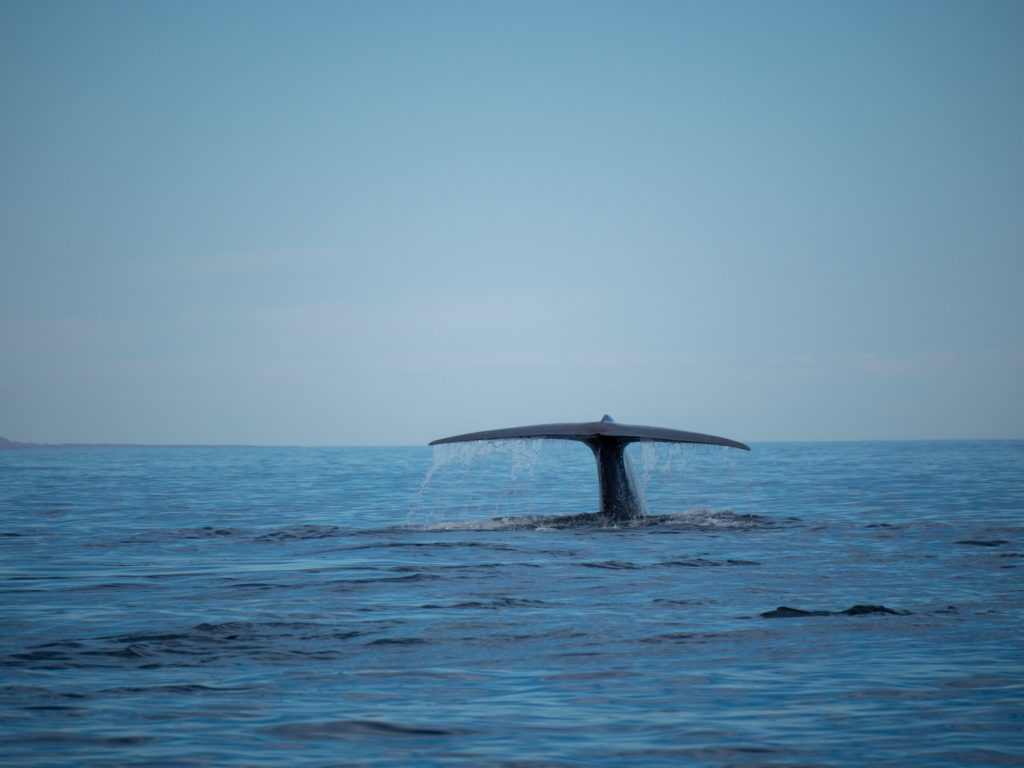
Which whales and dolphins can you see in Loreto Bay?
As we mentioned earlier, it’s not just blue whales who are attracted to the waters around Loreto. More than 10 species of whale can be found here, including humpback, grey fin, sei, sperm, minke, pilot, orca and tropical bottlenose whales (also known as beaked whales). On our blue whale watching trip in Loreto, we came across a pod of fin whales. There is also a good chance you’ll see dolphins on your trip too. Many different species of dolphin can be found in the Sea of Cortez, but the most frequently spotted dolphins near Loreto are bottlenose, common and spinner.
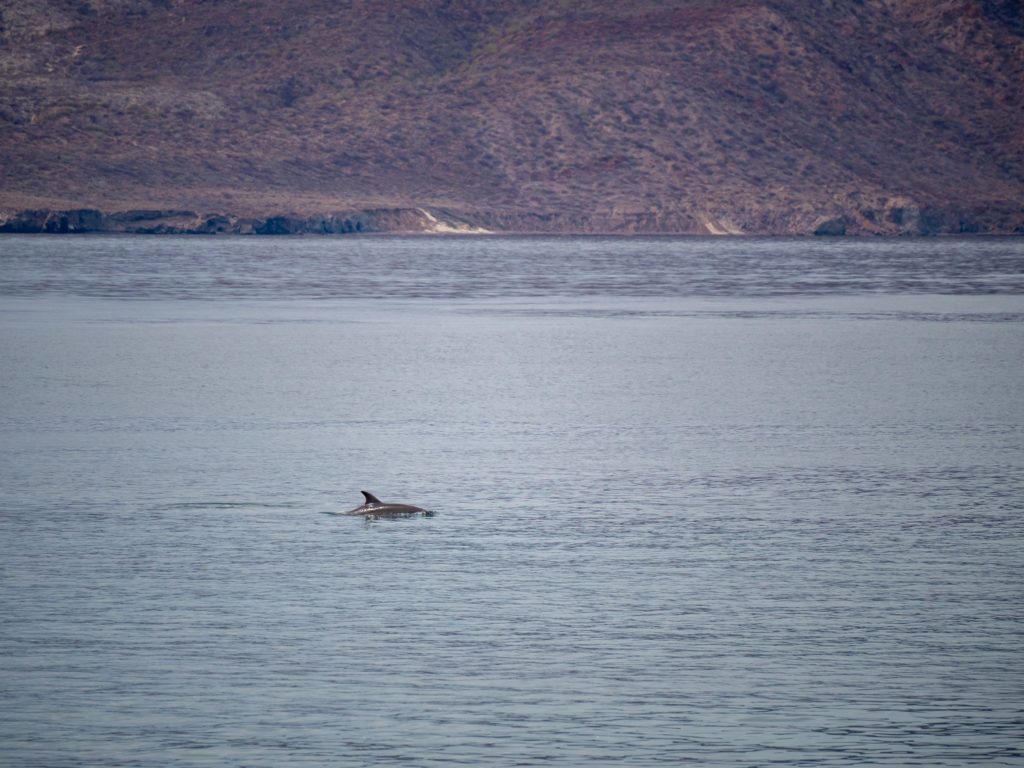
What other wildlife can you see in Loreto?
And it’s not just cetaceans you can see in Loreto. Sightings of turtles and stingrays are also common, while seeing sea lions is all but guaranteed. Isla Coronado is home to a large colony of these cheeky sea-puppies and you can actually get in the water with them too! Swimming with sea lions in Loreto is truly a bucket-list opportunity. Watch as they zip gracefully through the water and marvel at the inquisitive pups, who curiously approach swimmers and sometimes even nibble on their snorkel gear.
Read next: Snorkelling with Sea Lions (ethically) in La Paz
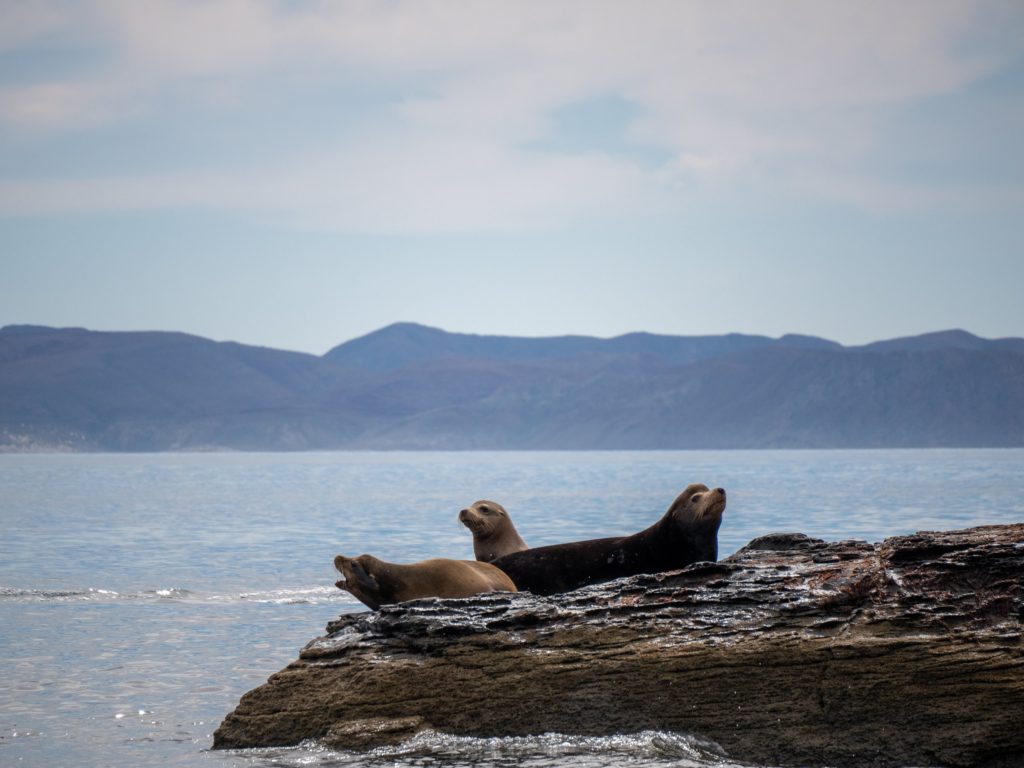
Bird-watchers will be delighted to know that Loreto Bay National Park is home to some unique bird species too. You don’t need to visit the Galapagos to see blue-footed boobies, as they can be found on the rocky cliffs of Loreto’s surrounding islands. Other bird species that can be spotted here also include the frigate bird, osprey, plover, pelican, hawk, eagle and turkey vulture.
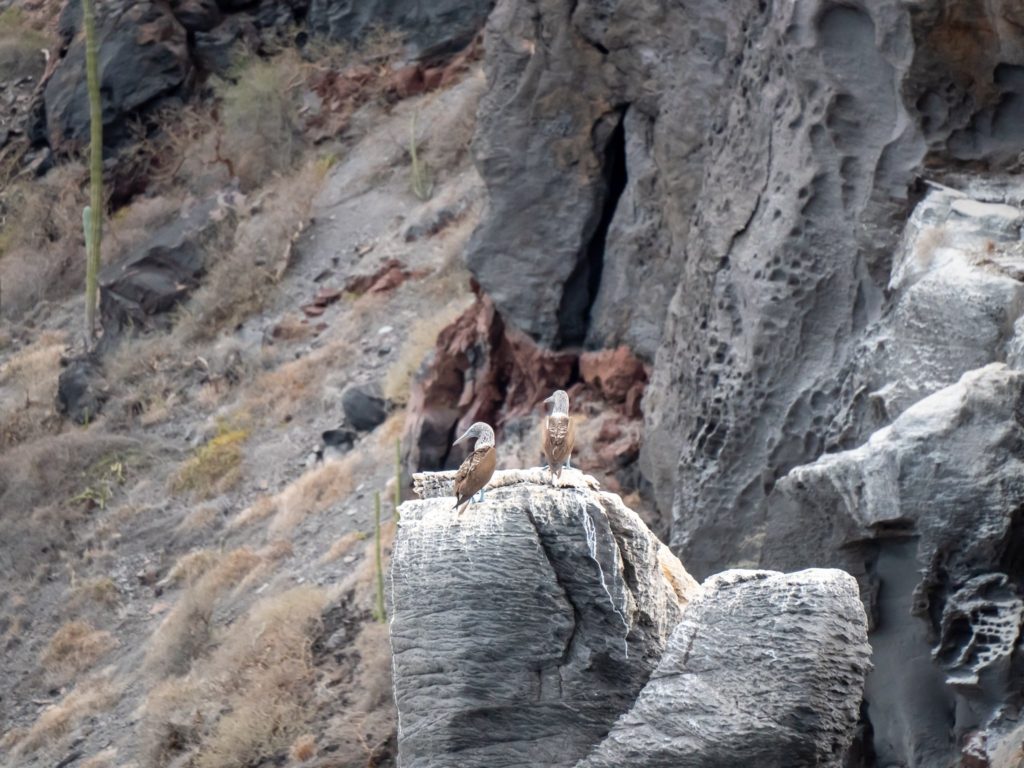
Loreto Bay’s Islands
All 5 of Loreto Bay’s islands are uninhabited and strict regulations mean they are the perfect habitat for lots of species of animal. You can cruise the islands, which are actually extinct volcanoes, on boat trip within the bay, where you’ll likely see lots of wildlife too. We’d recommend this Snorkelling and Kayaking Catamaran Cruise, which includes a cruise of the islands, a snorkelling and kayaking stop, lunch and transport.
Due to a wealth of diverse marine life, Loreto Bay National Park is also really popular for diving. There are more than 40 dive sites in the park and the protected nature of the bay means the water is often as flat as glass, with great visibility. Check out the 10 best scuba diving companies in Loreto on TripAdvisor.
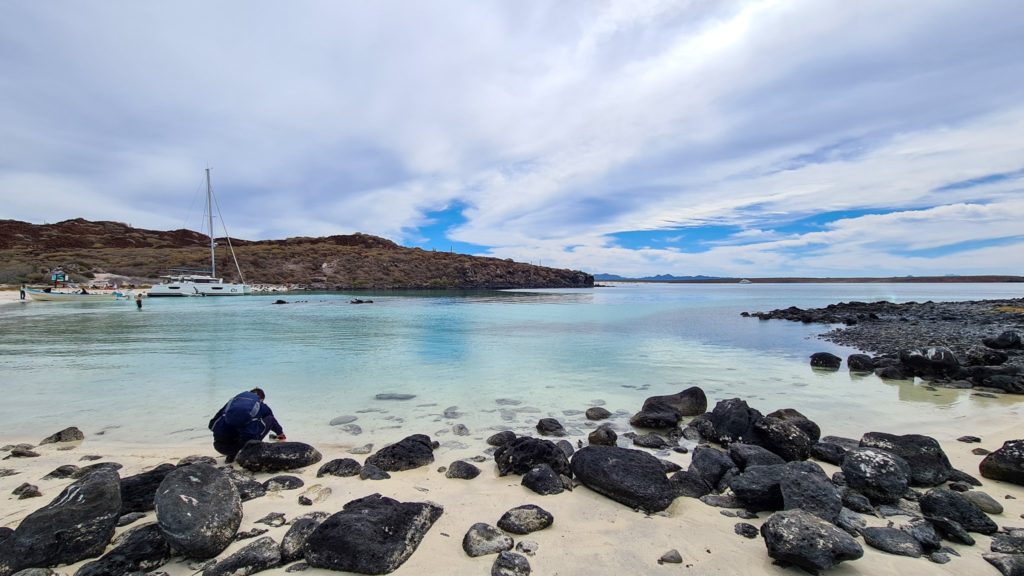
What is there to do in Loreto?
There’s plenty left to explore when you’re not whale watching. From ancient cave paintings, to historic missions and a wealth of diverse marine life, there are so many things to do in Loreto, it can be hard to fit it all in! Use our concise list of the best places to visit in Loreto, as well as the top activities, attractions, day trips and meals out to make your visit unforgettable.
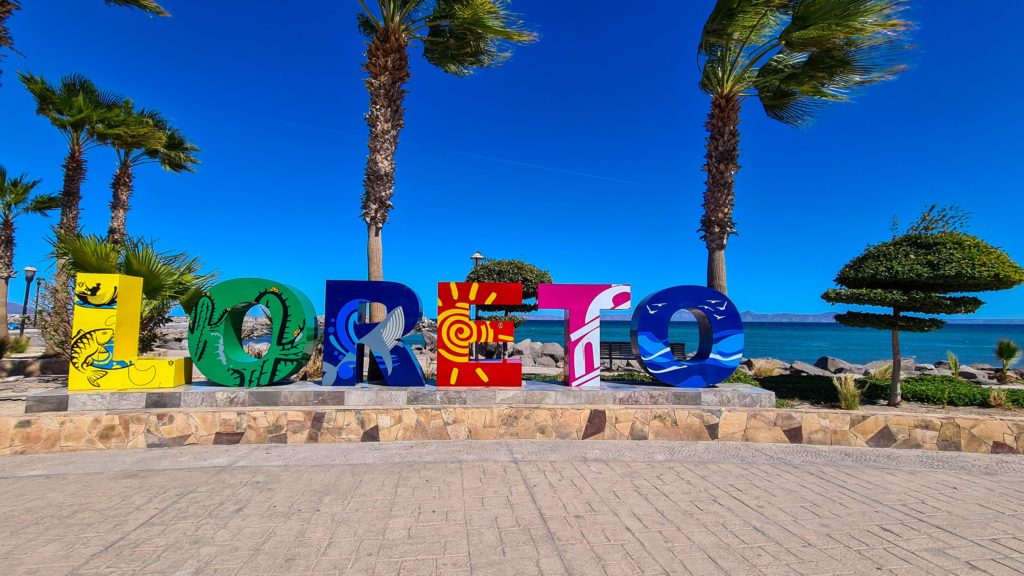
Read next:
Everything you need to know about Humpback Whale Watching in Los Cabos
Should You Touch a Grey Whale in Baja California Sur, Mexico?
The Thorough Guide to Magdalena Bay Grey Whale Camp
Everything you need to know about swimming with Whale Sharks in La Paz
